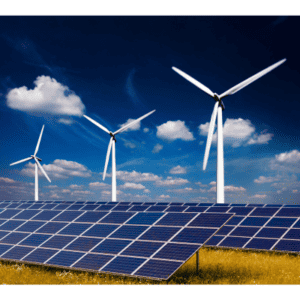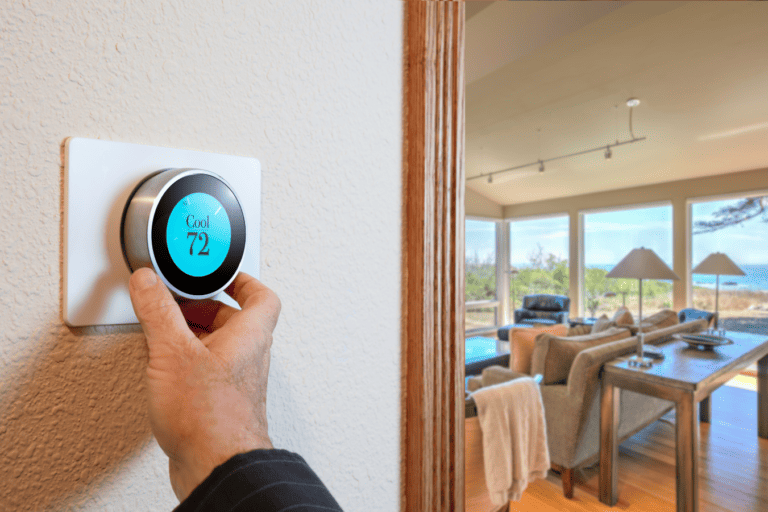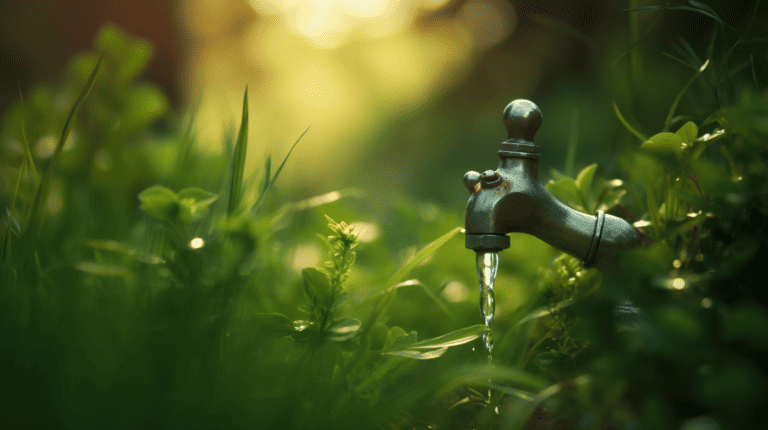The Potential of Wind Energy
Hey there, fellow green energy enthusiasts! Welcome to our deep dive into the exciting world of the potential of wind energy. If you’ve been wondering about the historical context or its significance in the global energy scenario, you’ve come to the right place. This article covers everything from the evolution of wind power to the potential and challenges it faces in the modern age.
The Evolution of Wind Energy
Let’s rewind the clock and examine the potential and how it has been part of human civilization for centuries. From the ancient Egyptians using wind to sail their ships to the Dutch using windmills to drain wetlands for farming, the history is as fascinating as it is varied.
Fast-forward to today, and we find ourselves at the cutting edge of technology. Modern wind turbines are marvels of engineering, capable of generating enormous amounts of electricity. Significant players in renewable energy, like the USA, China, and Germany, have made significant strides in production, setting an excellent example for the rest of the world.

The Potential of Wind Energy
So, why are we so excited? Well, the capacity of energy worldwide is staggering. Experts believe wind power could meet over 20% of the world’s energy demands by 2030. This is due to innovations, such as the transition from onshore to offshore wind farms, which allows us to harness more robust and consistent winds at sea.
To illustrate, let’s look at the Hornsea One project in the UK. Once fully operational, This offshore wind farm will be capable of powering well over a million homes. If that’s not the future of energy, I don’t know what it is!
Challenges in Harnessing the Wind
Of course, every silver lining has a cloud, and the wind is no different. On the environmental front, there are concerns about the impact of wind turbines on bird populations and the issue of noise pollution.
Technically, we also face challenges in storing and transmitting energy, which can be tricky due to its intermittent nature. Economically, the initial setup costs for wind farms can be high, and their maintenance is a constant factor.
Overcoming the Challenges
But fear not! There are numerous ongoing research and development efforts aimed at solving these issues. Countries worldwide are adopting various strategies to overcome these challenges, including implementing innovative solutions like smart grids and energy storage systems. AI applications also have a role to play in optimizing wind production and use.
The Role of Policy and Regulation in Promoting Energy from Wind
Governments play a vital role in promoting use through policies and regulations. Various incentives and subsidies make projects more economically viable and attractive to investors. Moreover, international cooperation on projects, such as shared offshore wind farms, can help drive the industry forward.
The Evolution and Prospects
Energy from Wind has played a significant role in the history of human civilization. From ancient civilizations using wind-powered water pumps and grain mills to today’s state-of-the-art wind turbines, the exploitation of wind as a power source has come a long way. This evolution aligns with the broad scope of energy-advancing technology. According to the Energy Information Administration, the renewable energy sector, especially wind and solar energy, is rapidly developing to meet the world’s increasing energy demand.
So where does wind come from? Simply put, it’s derived from the natural movement of the atmosphere, driven by the sun’s differential heating of the Earth’s surface. As the wind blows, it can be harnessed and transformed into electricity by devices like wind turbines. But how do wind turbines work? These giant structures capture the wind’s kinetic energy with their massive blades. The blades spin a shaft connecting to a generator and producing electricity.
A significant advantage of wind is that it is renewable, meaning it can be naturally replenished. Unlike fossil fuels, wind is inexhaustible and doesn’t contribute to global warming. Furthermore, it helps reduce reliance on foreign energy resources, promoting energy independence. Moreover, wind turbine projects have provided job opportunities in manufacturing, installation, maintenance, and support services.
However, as with any source of energy, there are also disadvantages. Wind turbines are often criticized for impacting wildlife, especially birds and bats. They also require significant space, leading to land use conflicts. Energy production depends on weather conditions; electricity generation is unreliable without a consistent breeze. These are some of the advantages and disadvantages which are crucial learning topics in class 10 and beyond to understand the complexities of sustainable energy sources.
The ten importance of wind stretches beyond energy production. They include but are not limited to pollination, weather patterns, seed dispersal, and sailing. The wind is crucial in transportation, mainly recreational sailing and wind sports. It also supports the distribution of seeds and pollination in nature, fostering biodiversity. Furthermore, wind significantly affects global climate patterns, which are integral to weather formation.
In light of this importance and challenges, efforts are underway to advance technology, improve siting, and optimize the design to make energy from the wind more viable. Advancing technology in siting wind farms involves strategically placing turbines to minimize their impact on wildlife while maximizing their energy capture. Technology advancements are also crucial in improving the efficiency and durability of turbines.
One approach to mitigating wind turbines’ disadvantages is locating them offshore, where winds are typically more robust and consistent. Offshore wind farms also reduce conflicts over land use, and the visual and noise impact on human populations is less of a concern. However, offshore wind projects present challenges, such as high installation costs and the complexities of reducing winds to avoid damage to the turbines.
In conclusion, the energy wind, as it is also known, is a compelling story of human innovation and our relationship with the environment. From its history to its future, the energy journey from the wind highlights the challenges and opportunities in harnessing nature’s power. As we refine our approach, advancing technology siting wind farms and other renewable energy projects, we will see continued growth and innovation in this vital sector.
A Comparative Analysis of Energy from Wind: The US and Europe
The energy sector has been a significant player in the global pursuit of renewable energy resources. A notable contributor to this quest has been the European Wind Energy Association, which has actively encouraged the development and utilization of energy from the wind across Europe.
It is widely adopted globally, defined as creating electricity using the wind or explicitly using wind turbines. To better understand its implications, let’s examine examples of wind energy facts in two locations: Europe and the United States.
The European Association has fostered various initiatives that have seen Europe excel in energy from wind production. A significant percentage of Europe’s renewable energy comes from wind from both onshore and offshore wind farms. Offshore wind energy examples, in particular, have been an area of substantial growth, with countries like Denmark, the United Kingdom, and Germany leading the way in constructing offshore wind facilities.
In contrast, US has predominantly focused on onshore wind farms. However, recent years have seen substantial interest and growth in US wind energy, mainly offshore along the East Coast. This has been driven by the country’s aim to diversify its energy sources and reduce carbon emissions.
It has various uses, serving as a versatile energy source. Besides primarily generating electricity, it can be used for tasks such as pumping water in rural settings, charging batteries for portable or off-grid applications, and even powering electric cars.
One of the fascinating facts is its cost-effectiveness. Over the past decade, the cost of wind energy has significantly decreased, making it one of the most affordable renewable energy sources. According to the US Energy Information Administration, the average levelized cost of onshore cost in 2020 was between $28 to $54 per MWh, depending on the wind resource at the plant site. As technology advances, it’s anticipated that the cost will continue to decline, further promoting its adoption.
Despite these promising trends, there are challenges to be faced. One is the intermittent nature of wind, which can make power generation unpredictable. Moreover, there are environmental concerns, such as the impact on bird migration and noise pollution. However, ongoing research and technological advancements continuously improve efficiency and ecological footprint.
In conclusion, the European Association and the US contribute significantly to the global landscape. They provide valuable lessons and case studies on implementation, advantages, and challenges. Despite the obstacles, it continues to hold a promising future as a sustainable, cost-effective power source. As we move forward, it’s clear that it will play an integral role in the world’s transition to renewable energy.
Conclusion
It’s an exciting time in the field of renewable energy, and we’re thrilled to be a part of it. With every challenge comes an opportunity for innovation, and we’re confident that with collective efforts, we can make Wind a significant player in the global energy scenario.
Remember, we all have a role to play in promoting renewable energy. Whether supporting green energy policies or installing a small wind turbine in our backyard, every little bit helps.
FAQ
Q: Is uses of wind energy a reliable source of energy?
A: While the wind is an intermittent resource, it can be a highly reliable power source with advancements in energy storage and grid technology.
Q: How does wind energy help in climate change mitigation?
A: generates electricity without producing greenhouse gases. By replacing traditional energy sources, it reduces our overall carbon emissions, helping to combat climate change.
Q: What’s the lifespan of a wind turbine?
A: A modern wind turbine has a lifespan of around 20-25 years. However, many parts of the turbine can be recycled or reused at the end of this period.
Q: What’s the difference between onshore and offshore wind farms?
A: Onshore wind farms are on land, while offshore wind farms are at sea. Offshore winds tend to be more robust and more consistent, making offshore farms more efficient, though more challenging and expensive to install and maintain.
Until next time, keep dreaming green!
Resources
https://en.wikipedia.org/wiki/Wind_power
We’re reader-supported. We may earn an affiliate commission when you buy through links on our site.






